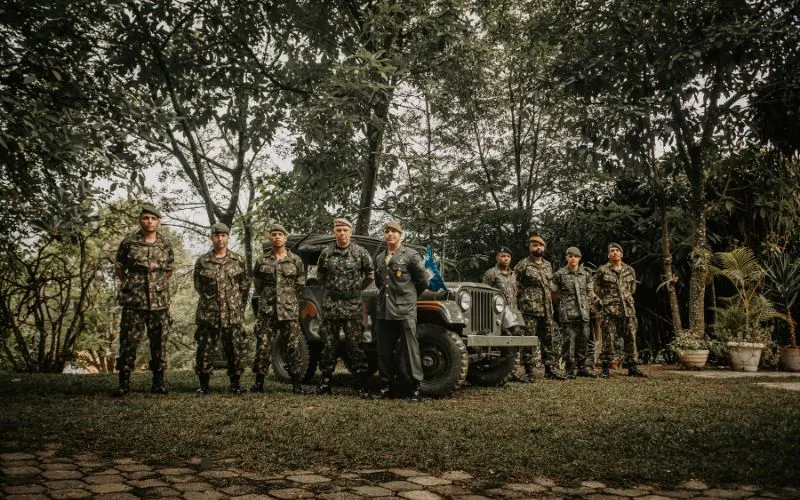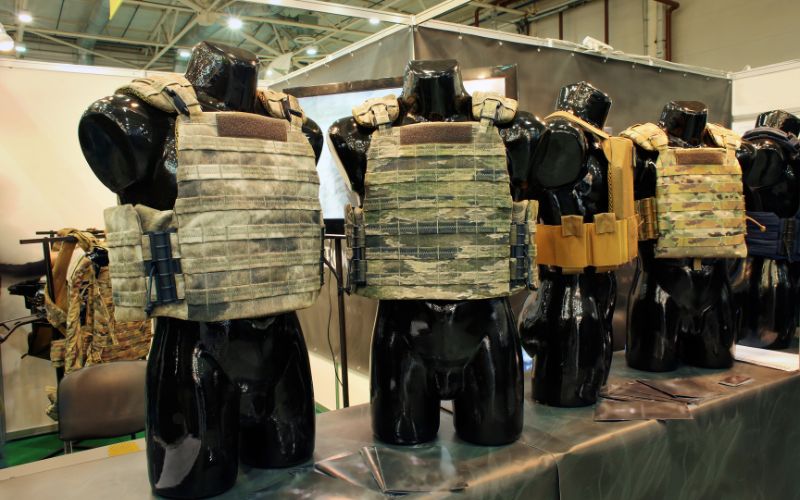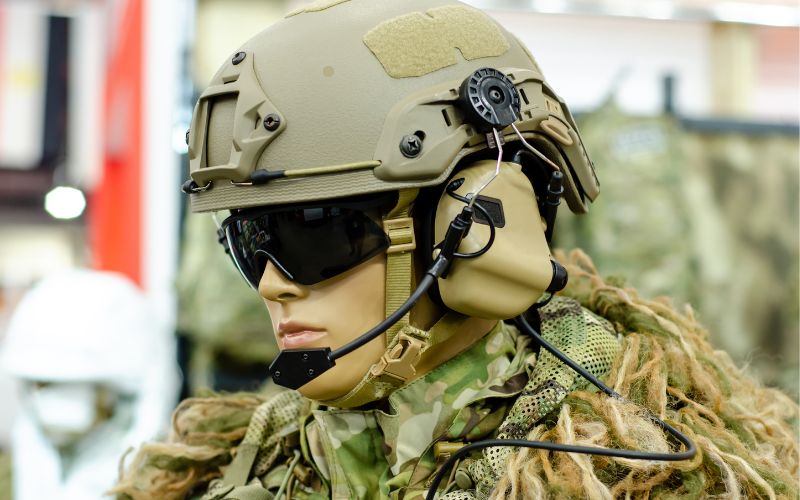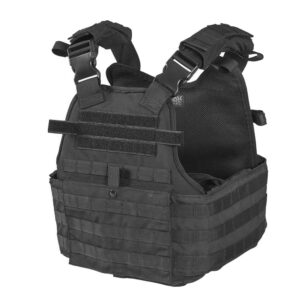What Plate Carrier Does the Army Use

Regarding military equipment, few items are as important as the plate carrier. It is the protective vest that soldiers wear to protect their vital organs from ballistic threats such as bullets and shrapnel. However, not all plate carriers are created equal. Each branch of the military uses specific plate carriers designed to meet the needs of soldiers in different types of combat situations. The plate carrier system was developed over the years for the U.S. Army to improve functionality, comfort, and protection. This blog post will detail the history, design, and purpose of the U.S. Army’s plate carrier and an overview of the different features and roles in modern military operations.
What Is A Plate Carrier?
A plate carrier is an armor vest that carries ballistic plates to safeguard against high-speed projectiles or shrapnel. It is usually made from thick, durable material such as nylon or Cordura, which is lightweight, flexible, and adjustable. The plates inside the carrier are made of ceramic, steel, or polyethylene. They absorb and stop bullets in their path to prevent body penetration.
The plate carrier provides ballistic protection but allows soldiers to carry additional gear, such as magazines, medical supplies, and communication devices. Thus, it is a multifunctional tool that combines safety and utility.
Evolution Of The U.S. Army Plate Carrier System

Over the past two decades, the U.S. Army has changed its plate carrier systems in response to the evolving demands of
modern warfare. From the large, cumbersome, and restrictive body armor that soldiers wore, the change in materials and design resulted in lighter, more modular, and more effective systems.
One major change was the Interceptor Body Armor (IBA) system, which was introduced in the latter half of the 1990s. It featured a vest with soft panels on the front and small hard armor plates on both sides and the back. While the protection was solid, it was too bulky and uncomfortable, and it was less flexible than the soldier’s needs for different missions.
The IOTV later replaced the IBA. Compared to the IBA, the IOTV significantly improved comfort and protection. It was lighter, more breathable, and flexible, permitting greater mobility and a wider scope of operations. More parts of the IOTV were also adjustable, so soldiers could conveniently modify the vest.
However, this continued with the need for further evolution, especially with the emerging threat from conventional and asymmetrical warfare. This then called for the development of the Soldier Plate Carrier System.
Soldier Plate Carrier System (SPCS)
The SPCS is the standard, current issue plate carrier for the soldiers of the United States Army and was made to be a sleeker, more customizable carrier than the previous versions. The first generation of these came about around 2010 due to modern warfare requirements that led to demands for lighter weight and efficient protective gear for operations and mobility without degrading their performance.
The SPCS is meant for combat missions where mobility, speed, and agility are paramount. It offers protection from ballistic threats and is designed to be worn with additional gear, such as a helmet, gloves, and a tactical belt. Thus, it offers comprehensive protection and functionality.
Key Features Of The Soldier Plate Carrier System
The Soldier Plate Carrier System (SPCS) ensures that U.S. Army soldiers receive a balance of protection, comfort, and functionality in high-stress combat situations. Its modular structure and advanced materials allow soldiers to personalize gear while maintaining mobility and effectiveness. The SPCS’s modular design is one of the main features that make it an essential part of modern military armor.
One of the SPCS’s benefits is that it is very modular. The plate carrier is flexible, so soldiers can adjust the vest to fit their specific mission needs. This is achieved by adding MOLLE webbing on the vest’s front, back, and sides, to which pouches, holsters, and other accessories can be attached. This modular system allows soldiers to carry extra ammunition, medical supplies, and tools without bulky backpacks or other equipment.
Lightweight and Low-Profile
The SPCS is significantly lighter and more streamlined than older body armor systems. This is essential for soldiers who must move quickly and efficiently in combat scenarios. While providing adequate protection against various ballistic threats, the SPCS allows for improved mobility, helping soldiers maintain high endurance and performance during long missions.
Ballistic Protection
The SPCS is designed to hold both front and rear ballistic plates in ceramic or polyethylene. These plates shield against high-powered rounds from 7.62mm and 5.56mm NATO ammunition. Side plates are optional but carried by some soldiers for improved coverage. Hard armor plates protect vital organs from injury due to high-velocity projectiles.
Improved Comfort
The SPCS has ergonomics and comfort for soldiers in its design. The internal structure of the vest has padded shoulder straps and a padded cummerbund to allow even weight distribution over the torso. This ensures less fatigue and less friction or chafing for soldiers when they have been wearing the carrier for many hours.
In addition, the SPCS uses moisture-wicking materials to keep soldiers cool and dry, even in hot or wet environments. This will make the plate carrier comfortable for long missions in deserts or jungles.
Quick Release Mechanism
Quick release is another important feature of the SPCS. It can be used to remove the plate carrier quickly, just in case a soldier needs to remove it fast for an injury or evacuation. This quick-release mechanism is initiated by pulling on a cord or handle that disengages the vest from the soldier’s body. Thus, if needed, the soldier can get out of his armor within seconds without wasting precious time.
Compatibility with Other Gear

The SPCS is designed to work seamlessly with other military equipment, including helmets, tactical belts, and hydration systems. Its modular design allows for easy integration with other components of a soldier’s loadout, ensuring that everything is securely attached and accessible during combat.
Role Of The Plate Carrier In Modern Combat
The plate carrier, especially the Soldier Plate Carrier System, plays an important role in modern combat activities. Though it does not guarantee total protection against ballistic threats, it reduces the chances of damage or loss of life, which is significant, especially for mobility during war, counterinsurgency operations, and dynamic scenarios.
Apart from providing protection, the plate carrier is a carriage platform for carrying important equipment. Various pouches for attaching and carrying ammunition, radios, and medicines, among other things, are highly important to a soldier’s survival in combat. For these reasons, the plate carrier is one of the most valuable gears for any soldier.
Conclusion
The U.S. Army’s Soldier Plate Carrier System represents the culmination of decades of military body armor technology development. Designed to balance protection, comfort, and mobility, the SPCS is a versatile, modular system that enables soldiers to stay safe and effective in various combat environments. As threats evolve and warfare continues to change, plate carriers will likely grow, ensuring that soldiers have the best protection in the field.
Frequently Asked Questions
What is the Name of the Army Plate Carrier?
It is called the Soldier Plate Carrier System (SPCS). This tactical gear is the best military equipment, featuring high-quality body armor technology that provides advanced protection and agility for soldiers in challenging environments.
What Plate Carrier Do Special Forces Use?
Special forces selection ensures you receive elite unit equipment specific to your mission and its tactical requirements. You would be issued high-performance equipment such as LSAPP, IOTV, and MSV, which is engineered for mobility and adaptability in complex environments, maximizing your mission effectiveness and survivability.
What Level Plate Does the US Army Use?
You are interested in how the Army’s plate level compares. The Army uses Level IV plates in its plate carriers, which can withstand armor-piercing rounds. Plate carrier models come with accessories that increase protection in high-threat situations.

